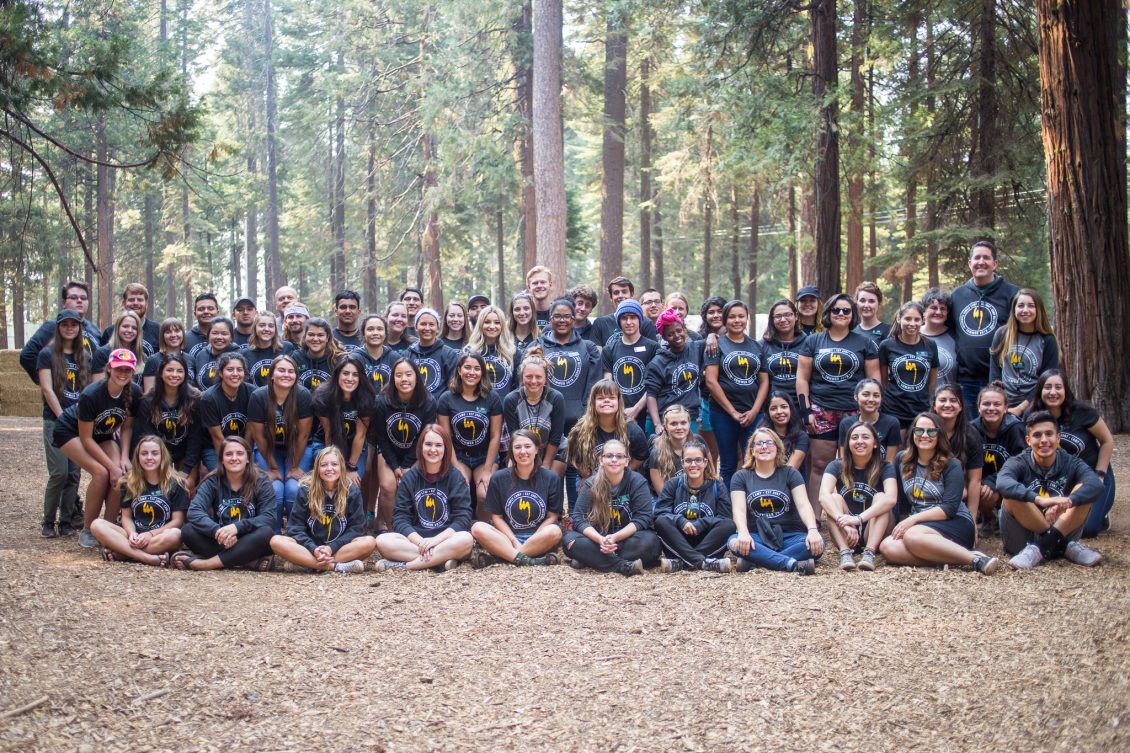Everyone who works in business, from someone who pays the bills to the person who hires and fires, practices information systems (MIS) For instance, a supermarket could use a computer database to keep track of which products sell best. And a music store could use a database to sell CDs over the Internet.
Information is worthless if it doesn’t serve a purpose. MIS students learn how businesses use the information to enhance the company’s operations.
If you want to learn how to manage several information systems, you have to enroll in one of the best MIS colleges.
To help you get started on a good note, we will connect you to the best Management Information System (MIS) Colleges In the USA. Read through for details.
MIS is the only major that focuses on both business processes and information technology. If you are interested in business and technology, like a theory but not too much, like technology enough to want to keep up with what’s hot but don’t want to be writing programs or putting together chips all your life, then MIS is for you.
All you need is an interest in technology and the will to use technology to enhance people’s lives. MIS is not all about programming just as a lot of people think. However, programming is just a small part of the curriculum and there are many jobs in MIS where you do not program.
We believe that the most upwardly mobile career path for those who like to work with business and technology is definitely in MIS. Thus, continue reading to see the best MIS colleges in the USA, the requirements, and every information about the school and program.
Table of contents
- What is management information system?
- Best MIS colleges in the USA
- #1. Carnegie Mellon University
- #2. Massachusetts Institute of Technology
- #3. Georgia Institute of Technology
- #4. University of Arizona
- #5. University of Texas–Austin
- #6. University of Minnesota–Twin Cities
- #7. Indiana University–Bloomington
- #8. University of Maryland–College Park
- #9. Arizona State University–Tempe
- #10. Georgia State University
- Conclusion
- Recommendations
- References
What is management information system?
A management information system (MIS) is an information system used for decision-making, and for the coordination, control, analysis, and visualization of information in an organization.
The study of the management information systems testing people, processes, and technology in an organizational context. In a corporate setting, the ultimate aim of the use of a management information system is to increase the value and profits of the business.
However, looking at these three words phrase, it’s easy to define Management Information Systems as systems that provide information to management. Thus that is the simple definition of MIS that generally sums up what a Management Information System is, and what it should do. Hence, its role and impact on the smooth operation of a company can never be overemphasized.
That is the reason why every successful company makes use of these systems in one way or another. Also, this means that when properly implemented, Management Information Systems will help achieve a high level of efficiency in a company’s management operations.
SEE ALSO: Best Chiropractic Schools in Texas, USA | 2023
What Can I Do With an MIS Degree in the USA?
Business majors with a degree in management information systems have knowledge of business technology, management techniques, and organizational development. They are prepared for a wide range of careers.
The type of job you can get is very dependent on the level of your degree, the school you have graduated from, and previous work experience in technology and management fields.
The more experience you have, the easier it is to get an advanced job (such as a supervisory position). Thus, the following is just a sample of some of the jobs in the management information systems field.
- Business Analyst: A business analysts use analysis to help enhance an organization’s efficiency and effectiveness.
- Computer Systems Analyst: A computer systems analyst uses analysis to design, develop, or improve computer systems and solutions for organizations.
- Database Administrator: As the name suggests, a database administrator creates, administers, and maintains databases, such as information or financial databases, for organizations.
- Information Security Analyst: An information security analyst analyzes, monitors, and also protects an organization’s computer networks and systems from cyber-attacks.
- Web Developer: A web developer designs, creates, improves, and maintains websites and web applications for individuals and organizations.
How long does it take to get an MIS degree?
The average management information systems degree consists of 120 to 128 credits, and full-time students generally take four years to earn an MIS degree.
What is the average MIS salary in the USA?
Although the average salaries are around USD $60,000, MIS graduates from top universities can make around USD $80,000 annually. Thus the US Bureau of Labor Statistics (BLS) places the median salary of Computer and Information Systems Managers at $139,220.
MIS job outlook for MIT colleges in the USA
Between 2016 and 2026 (in the US alone), job growth is pegged at 12% for Computer and Information Systems Managers, which is faster than average and expected to open 44,200 new jobs over this period.
However, Management Analysts have an expected growth of 14% which translates to 115,200 new job opportunities. And, Information Security Analysts which have a median salary of $95,510 have a 28% expected job growth.
Admission Requirements for MIS programs in MIS colleges in the USA
Many schools, that offer an MIS degree, accept both GRE and GMAT, for entrance processing. If there is a specific need for another test score, such as a subject score for Mathematics, they usually ask for it separately.
The wonder-thumb rule is that an applicant needs to have a pretty decent quantitative background. And going by the standards of the current GRE quant section, one needs to be afraid of high school math.
Just like other graduate programs, no strict cut-off for GRE or GMAT specified by the individual schools.
Best MIS colleges in the USA
Below is a list of some of the best MIS colleges in the USA:
- Carnegie Mellon University
- Massachusetts Institute of Technology
- Georgia Institute of Technology
- University of Arizona
- The University of Texas–Austin
- University of Minnesota–Twin Cities
- Indiana University–Bloomington
- University of Maryland–College Park
- Arizona State University–Tempe
- Georgia State University
#1. Carnegie Mellon University
Carnegie Mellon University is a private institution that was established in 1900. It has total undergraduate students of about 6,947, its setting is urban, and the campus size is 153 acres. It utilizes a semester-based academic calendar.
Carnegie Mellon University’s ranking in the 2020 edition of Best Colleges is National Universities, #25. Its tuition and fees are $57,119.
Carnegie Mellon University, established by industrialist and philanthropist Andrew Carnegie. It is located in Pittsburgh which offers dining and entertainment options. It also offers professional sports teams including the Penguins (hockey), Steelers (football) and Pirates (baseball).
Only freshmen are expected to live on campus. However, the university guarantees housing for all four years and the majority of students choose to remain on campus.
Almost 20 percent of the student population has an affiliation with Greek life, which consists of more than 20 fraternities and sororities.
The Carnegie Mellon Tartans compete in NCAA Division III competitions, and the Kiltie Band, which sports full Scottish regalia, plays at every home football game.
Carnegie Mellon is known for its programs in science and technology. But, its seven schools and colleges include the College of Fine Arts and the Dietrich College of Humanities and Social Sciences.
Moreso, its graduate programs include the highly ranked Tepper School of Business, Carnegie Institute of Technology and School of Computer Science.
Undergraduates at Carnegie Mellon also have the opportunity to participate in research. Undergraduates can even receive grants or summer fellowships to support research in their field of study.
Randy Pausch, the author of the New York Times best-selling book “The Last Lecture,” was a professor at Carnegie Mellon.
#2. Massachusetts Institute of Technology
Massachusetts Institute of Technology is a private institution that was established in 1861. It has a total undergraduate enrollment of 4,602, its setting is urban, and the campus size is 166 acres.
It utilizes a 4-1-4-based academic calendar. Massachusetts Institute of Technology’s ranking in the 2020 edition of Best Colleges is National Universities, #3. Its tuition and fees are $53,790.
Located outside Boston in Cambridge, Massachusetts, MIT however, centers on scientific and technological research and is divided into five schools.
University research expenditures have exceeded $700 million a year, with funding from government agencies such as the Department of Health and Human Services and Department of Defense.
MIT’s profoundly ranked graduate schools include the School of Engineering and Sloan School of Management, in addition to strong programs in economics, psychology, biology, chemistry, earth sciences, physics, and mathematics.
Also, freshmen are expected to live on campus, and about 70 percent of all undergraduates live on campus. Architect Steven Holl designed one dorm, commonly called “The Sponge.”
Further, The Independent Activities Program, a four-week term in January, offers special courses, lectures, competitions, and projects.
Notable alumni include Apollo 11 astronaut Buzz Aldrin, former U.N. Secretary-General Kofi Annan, and former Federal Reserve Bank Chairman Ben Bernanke.
READ ALSO: MIT Civil Engineering: Programs, Admission Requirement, Cost, Aids
#3. Georgia Institute of Technology
Georgia Institute of Technology is a public institution that was founded in 1885. It has total undergraduate students of 16,049, its setting is urban, and the campus size is 400 acres.
It utilizes a semester-based academic calendar. Georgia Institute of Technology’s ranking in the 2020 edition of Best Colleges is National Universities, #29. Also, Its in-state tuition and fees are $12,682; while out-of-state tuition and fees are $33,794.
Georgia Tech, located in the heart of Atlanta, offers a broad range of student activities. The Georgia Tech Yellow Jackets, an NCAA Division I team, compete in the Atlantic Coast Conference and have a fierce rivalry with the University of Georgia.
Since 1961, the football team has been led onto the field at home games by the Ramblin’ Wreck, a restored 1930 Model A Ford Sport Coupe.
Georgia Tech has a small but vibrant Greek community. Freshmen are offered accommodation but aren’t expected to live on campus. In addition to its campuses in Atlanta and Savannah, Georgia Tech also has campuses in France, Ireland, Costa Rica, Singapore, and China.
Georgia Tech has six colleges. Its highly ranked graduate schools include the College of Engineering and Scheller College of Business. Georgia Tech is very active in research.
Notable alumni include Mike Duke, former president and CEO of Walmart; Bobby Jones, founder of The Masters’ golf tournament; and former professional baseball player Nomar Garciaparra.
John Heisman was Georgia Tech’s first full-time football coach, and the Heisman Memorial Trophy was named in his honor.
Further, the school’s newspaper for faculty and staff, The Whistle, is named for the steam whistle in the Tech Tower that blows in intervals with the campus class schedule, and each time the Yellow Jackets score a touchdown.
#4. University of Arizona
The University of Arizona is a public institution found in 1885. It has total undergraduate students of 35,233, its setting is a city, and the campus size is 392 acres.
It uses a semester-based academic calendar. University of Arizona’s ranking in the 2020 edition of Best Colleges is National Universities, #117. Moreso, its in-state tuition and fees are $12,467; out-of-state tuition and fees are $36,366.
One of the largest public institutions in its state, the University of Arizona in Tucson offers students a broad range of activities and academic opportunities, including three levels of intramural sports and more than 30 fraternities and sororities, among many other student organizations.
Also, the Arizona Wildcats NCAA Division I teams compete in the Pac-12 Conference. As a research institution, both undergraduate and graduate students get involved in research projects at UA.
Freshmen do not live on campus, although they make up about 80 percent of the residential campus community.
Further, the university has a wide range of graduate programs, including the Eller College of Management, the James E. Rogers College of Law and a College of Medicine. Notable UA alumni include reality TV star Kourtney Kardashian and journalist Geraldo Rivera.
Related Post: University of Arizona Scholarships 2023
#5. University of Texas–Austin
The University of Texas-Austin is a public institution, founded in 1883. It has total undergraduate students of 40,804, its setting is urban, and the campus size is 437 acres.
It uses a semester-based academic calendar. However, the University of Texas-Austin’s ranking in the 2020 edition of Best Colleges is National Universities, #48.
Its in-state tuition and fees are $10,818; out-of-state tuition and fees are $38,228.
The University of Texas-Austin is one of the biggest schools in the nation. It is divided into 18 schools and colleges, the biggest of which is the College of Liberal Arts.
It also has highly-rated graduate programs, including the McCombs School of Business, Cockrell School of Engineering and School of Nursing.
Students can engage in more than 1,300 clubs and organizations or in the sizable UT Greek system. The university has many student media outlets, and its sports teams are notorious competitors in the Division I Big 12 Conference.
Further, UT also offers hundreds of study abroad programs, with the most popular destinations being Spain, Italy, the United Kingdom, France, and China. Also, freshmen do not have to live on campus.
#6. University of Minnesota–Twin Cities
The University of Minnesota-Twin Cities is a public institution, founded in 1851. It has a total undergraduate enrollment of 34,633, its setting is urban, and the campus size is 1,204 acres.
It employs a semester-based academic calendar. The University of Minnesota-Twin Cities’s ranking in the 2020 edition of Best Colleges is National Universities, #70. Its in-state tuition and fees are $15,027; out-of-state tuition and fees are $33,325.
Minneapolis and St. Paul, known as the Twin Cities, is frequently recognized for sports, cleanliness, and volunteerism. The school has a campus in each city, though the Minneapolis site is considered the main campus of the University of Minnesota.
Nevertheless, freshmen do not have to live on campus, but more than 80 percent who choose to can opt to live in traditional residence halls or one of more than two dozen Living Learning communities, such as the Healthy Foods, Healthy Lives House and La Casa De Español.
Also on campus are more than 600 student organizations, including more than 30 fraternities and sororities. However, the Minnesota Golden Gophers compete in the NCAA Division I Big Ten Conference, and all athletic events are held in the Minneapolis campus’s Stadium Village neighborhood.
Under the Four-Year Graduation Plan, the university warrants that all necessary classes will be available for students to finish their degrees on time. Moreso, If courses are not available in an undergraduate’s four years of schooling, the university will pay for the extra credits.
Further, the public research university begins to engage students at the undergraduate level. Some university applicants will even have the opportunity to research when they receive their acceptance letters, and undergraduate researchers are paid for their work.
#7. Indiana University–Bloomington
Indiana University-Bloomington is a public institution, founded in 1820. It has a total undergraduate enrollment of 33,301, its setting is a city, and the campus size is 1,939 acres. It uses a semester-based academic calendar. Indiana University-Bloomington’s ranking in the 2020 edition of Best Colleges is National Universities, #79. Its in-state tuition and fees are $10,949; out-of-state tuition and fees are $36,514.
The school’s sports teams are notorious competitors in the NCAA Division I Big Ten Conference, and, since Indiana University does not have a mascot, all teams are known simply as Hoosiers.
There are over 750 student organizations on campus, and more than 8,200 students go Greek in the school’s large community of fraternities and sororities. Freshmen must live on campus for at least two semesters, though there are some exemptions.
The Midwestern college town of Bloomington, or B-town, as it is known to many, is home to a lively cultural scene. Arts and entertainment performances, such as the annual Lotus World Music & Arts Festival, take place year-round.
Students can examine the surrounding area through the Indiana University Outdoor Adventures program, which coordinates hiking, whitewater rafting, and rock climbing trips. Active students can compete in the annual Little 500, the largest collegiate bike race in the nation and a fundraiser for university scholarships, or spend 36 hours on their feet in the IU Dance Marathon, a fundraiser for Riley Hospital for Children in Indianapolis.
READ ALSO: Chamberlain University College of Nursing in 2023: Admission, Courses, Acceptance rate, Tuition, Aid
#8. University of Maryland–College Park
University of Maryland–College Park is a public institution, founded in 1856. It has total undergraduate students of 30,762, its setting is suburban, and the campus size is 1,335 acres. It utilizes a semester-based academic calendar. The University of Maryland–College Park’s ranking in the 2020 edition of Best Colleges is National Universities, #64. Thus, Its in-state tuition and fees are $10,778; out-of-state tuition and fees are $36,890.
Located between Washington, D.C., and Baltimore, the University of Maryland offers students a suburban lifestyle within easy reach of big-city experiences. The flagship campus in College Park, which has its own subway stop on the D.C.-area Metro transit system, is close to the nation’s capital.
There are over 800 clubs and organizations on campus, including nearly 60 fraternities and sororities. Also, freshmen and all other students do not live on campus. The Maryland Terrapins compete in the NCAA Division I Big Ten Conference. The mascot, Testudo, is a Diamondback terrapin– a species of turtle that is the official state reptile.
One of many Testudo sculptures on campus sits in front of McKeldin Library, and rubbing its nose is thought to bring good luck, particularly before exams.
Further, the University of Maryland has a highly ranked graduate program in education and the noted A. James Clark School of Engineering, as well as well-regarded offerings through the Robert H. Smith School of Business.
The university usually earns accolades for its sustainable and clean energy initiatives, such as its plan to be carbon neutral by 2050 and campus-wide efforts to compost dining hall waste. Notable Maryland alumni span the professional spectrum and include NASA scientist Charles Bennett, broadcast journalist Connie Chung and “Sesame Street” and “The Muppet Show” creator Jim Henson.
#9. Arizona State University–Tempe
Arizona State University—Tempe is a public institution, founded in 1885. It has total undergraduate students of 42,844, its setting is urban, and the campus size is 664 acres. It uses a semester-based academic calendar. However, Arizona State University—Tempe’s ranking in the 2020 edition of Best Colleges is National Universities, #117. Thus, its in-state tuition and fees are $11,338; out-of-state tuition and fees are $29,428.
Arizona State University—Tempe, which has one of the highest undergraduate populations in the nation, offers students a wide range of academic and extracurricular options.
Collectively, the campuses in Tempe and three other locations in the Phoenix area offer students more than 300 undergraduate academic programs to pick from and more than 500 clubs and organizations to check out. Moreso, for time away from Arizona, students can choose from more than 250 study abroad options.
Freshmen are expected to live on campus unless they commute from a parent’s home, are married or fall under other exemptions. The Arizona State Sun Devils sports teams compete in the NCAA Division I Pac-12 Conference and are particularly known for their baseball prowess.
Arizona State also offers a wide range of highly ranked graduate programs through schools including the W. P. Carey School of Business, Sandra Day O’Connor College of Law, the Ira A. Fulton Schools of Engineering and the Mary Lou Fulton Teachers College. Among the scores of notable people who have attended ASU are actor David Spade, talk show host Jimmy Kimmel, and baseball star Barry Bonds.
#10. Georgia State University
Georgia State University is a public institution, founded in 1913. It has total undergraduate students of 27,190, its setting is urban, and the campus size is 110 acres. It utilizes a semester-based academic calendar. However, Georgia State University’s ranking in the 2020 edition of Best Colleges is National Universities, #211. Thus, Its in-state tuition and fees are $11,076; out-of-state tuition and fees are $30,114.
At Georgia State University in downtown Atlanta, students have more than 200 majors and minors to choose from. First-year students – whether they live on campus or not – can opt into the university’s Freshman Learning Communities, which help ease the transition to college by clustering students who share mutual interests in the same class sections.
Outside of class, there are more than 400 student organizations to check out, including a large Greek community of fraternities and sororities. The Georgia State Panthers compete in the NCAA Division I Sun Belt Conference.
The university is committed to research in its centers and institutes, where students can get involved and present their work at the annual Undergraduate Research Conference. For graduate students, Georgia State is home to the J. Mack Robinson College of Business, a College of Law, a College of Education and more. Notable Georgia State alumni include Ken Lewis, former CEO of Bank of America, and rapper Ludacris.
Conclusion
In conclusion, all you need is an interest in technology and the will to use technology to enhance people’s lives.
MIS is the only major that focuses on both business processes and information technology. If you are interested in business and technology, like theory but not too much, like technology enough to want to keep up with what’s hot but don’t want to be writing programs or putting together chips all your life, then MIS is for you.
These are the MIS colleges in USA.
Recommendations
- Top Ranking Engineering Technology Universities/Colleges In USA 2023
- Best Pharmacy Schools In Illinois in 2023 | Best Schools, Requirements, Cost
- 10 Best Schools for Anthropology in the World 2023
References
- https://studyabroad.shiksha.com/usa/mis-colleges-dc
- https://www.collegechoice.net/rankings/best-masters-in-management-information-systems-degree-programs/
- https://yocket.in/universities-in-usa/management-information-system
- https://www.quora.com/What-are-the-top-universities-in-the-U-S-for-MIS-programs
- https://www.crackverbal.com/masters-in-management-information-system/
- https://www.usnews.com/best-colleges/rankings/business-management-information-systems





